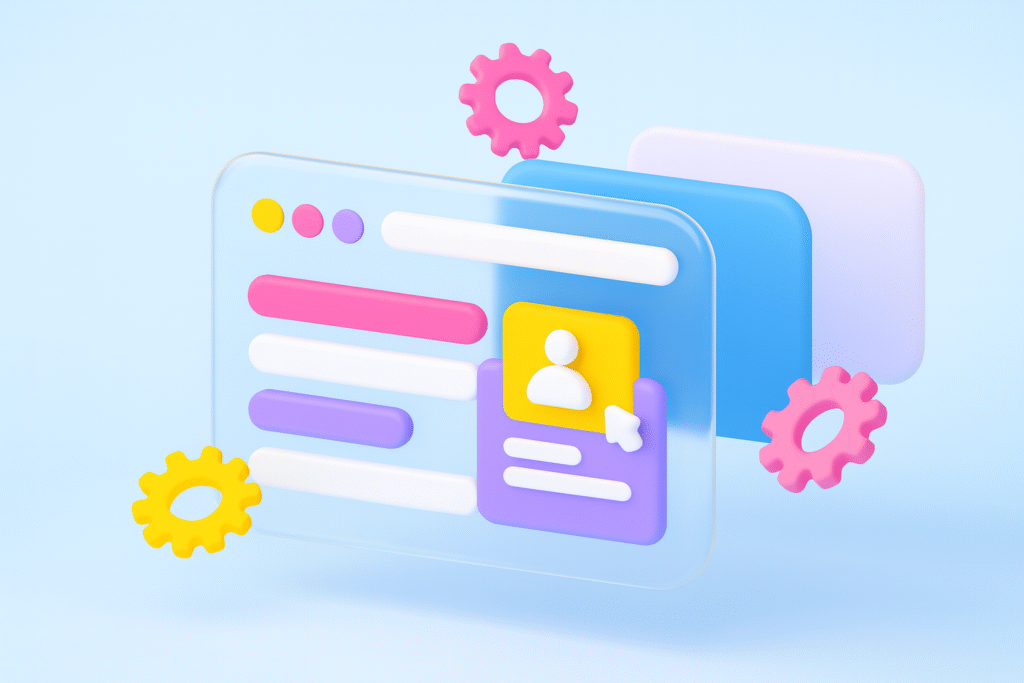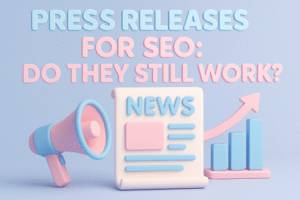Artificial intelligence is no longer just a sci-fi idea.
Asking Siri for directions or having Netflix suggest what to watch next are just two examples of how we already interact with AI more frequently than we realize.
The issue is that AI alone might come across as perplexing, mysterious, and even terrifying.
This is where the Human User Interface for AI idea enters the picture.
Think of it as the bridge between complex machine intelligence and us, ordinary humans who want clarity, not confusion.
The right interface makes AI approachable, understandable, and actually useful. Without it, AI risks being a “black box” that people don’t fully trust.
This blog post will explain what a Human User Interface for AI is, why it’s important, and what the technology’s potential future holds.
What Exactly is a Human User Interface for AI?
Simply said, it’s how we communicate with AI. We have dashboards, buttons, and menus with traditional software.
AI learns, adapts, and changes, so this isn’t necessarily how it works. That can be amazing and confusing at the same time.
AI’s complex internal workings are simplified into something that humans can comprehend and use with the help of a human user interface.
Not only should results be displayed, but the reasons for them should also be demonstrated.
When an AI tool informs a physician, for instance, that “This scan suggests a tumor,” the interface shouldn’t end there.
The location on the scan should be highlighted, the reasons should be shared, and the confidence level should be explained.
In this manner, rather than merely speculating about whether the AI is correct, the doctor can trust and validate the outcome.
Why Does This Matter So Much?
AI has great potential, but without a suitable user interface, it could be misinterpreted or, worse, abused. Here are a few reasons why the Human User Interface for AI is so important:
1. Building Trust
When people comprehend AI’s decision-making, they are more inclined to trust it. Openness fosters trust.
2. Making AI Accessible
Not everyone is a data scientist. A good interface makes AI usable for doctors, teachers, small business owners (basically anyone).
3. Encouraging Teamwork
AI shouldn’t replace humans, it should work with them. The interface makes collaboration possible, giving humans the final say.
Errors can have serious consequences in fields including security, healthcare, and finance.
Interfaces aid in pointing up dangers, prejudices, or restrictions so that people can make wise decisions.
What Makes a Good Human User Interface for AI?
Designing one isn’t easy, but there are a few things that really matter:
- Explainability: Rather than using technical jargon to explain results, the interface should use clear language.
- Natural Interaction: Whether using voice, writing, or gestures, communicating with AI should feel natural.
- Customization: Individuals require varying degrees of specificity. The user interface ought to adjust to them.
- Empathy: This is about comprehending human tone, mood, and context, not simply data.
- Multi-Modal Experiences: In the future, touch, voice, and images will all be combined. Consider posing a query to your AI assistant, receiving a response, and simultaneously viewing an interactive chart.
Everyday Examples You Already See
You might not realize it, but you’re already interacting with early versions of the Human User Interface for AI:
- Healthcare: Instead of just responding with a “yes” or “no,” diagnostic equipment can display highlighted scan locations.
- Customer service: Chatbots that can handle basic inquiries but seamlessly transfer you to a human when necessary.
- Automobiles: Real-time alerts, lane warnings, and brake reasons are displayed by driver-assistance features.
These examples show how much difference the interface makes. Without it, the AI would feel unhelpful or even unsafe.
The Challenges Ahead
Of course, creating the perfect Human User Interface for AI isn’t simple. Designers face a few big challenges:
- Simplicity vs. Accuracy: Oversimplify AI results, and you risk leaving out important details. Make it too technical, and people won’t understand.
- Bias Awareness: AI can inherit human biases from the data it’s trained on. Interfaces need to flag these risks.
- Over-Trusting AI: If the interface is too convincing, people might take its word without question, which can be dangerous.
- Security Concerns: A user-friendly interface still has to protect sensitive data and privacy.
Looking Ahead: The Future of Human-AI Interaction
So, what’s next? We’re moving toward AI that blends seamlessly into our daily lives. Imagine:
– Wearables that track your health and explain changes in real time.
– Virtual teammates in the workplace that adapt to your working style.
– Smart environments that adjust temperature, lighting, or even music based on your mood.
The big takeaway? The future won’t be about humans versus AI. It will be about humans with AI.
And the Human User Interface for AI will be the bridge that makes that partnership possible.
Final Thoughts
Our interactions with artificial intelligence determine how well AI performs. An effective AI HUI can make the difference between something that is confusing and something that empowers.
It guarantees that people comprehend, have faith in, and are at ease using AI.
Humans must remain at the center of our future design process. An AI is superior to one that is only the smartest if it respects human judgment, communicates clearly, and assists in decision-making.
The Human User Interface for AI is essential to turning cutting-edge technology into something that we can all utilize, depend on, and benefit from.









